
Every time I go into my local music shop, I struggle to stop myself from taking home armfuls of repertoire books. There is always more to explore, books to get for students and perhaps a little treat for myself as well. But there is a growing section on my bookshelf for reference resources: books I go back to time and again to check things, learn more and question how and why I do things as a piano teacher. Here are thirteen of these current resources and my take on why they might be valuable additions to your collection too.
Resources for your library
Hunting for a particular book on a particular teaching topic?
Here are some resources that might come in handy.
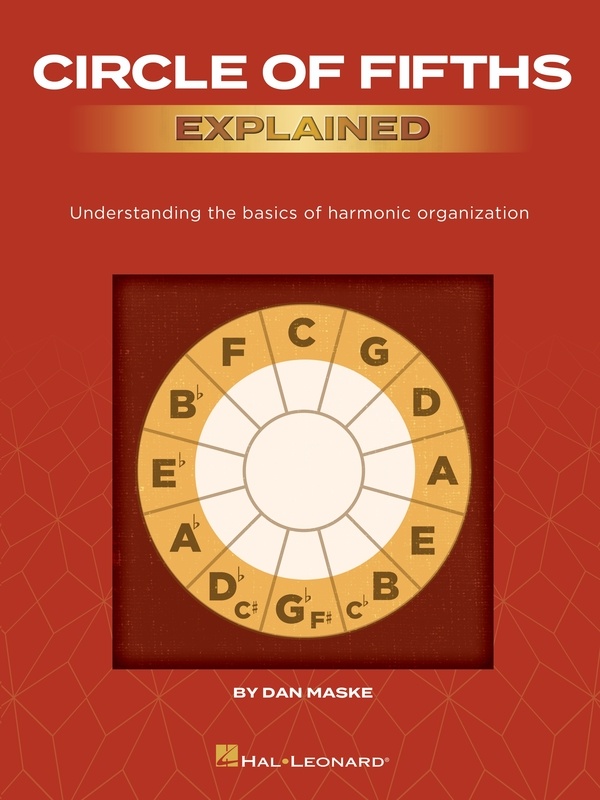
Circle of Fifths
Understanding the Basics of Harmonic Organization
by Dan Maske
The circle of fifths is a concept we are mostly very familiar with, and this resource pulls together all of that information in one place. It explores the circle of fifths and its application with key signatures, scales, chord progressions and modulation. I love that it encourages singing and aural skill development. This resource is a deep dive into the theory behind the circle of fifths and its uses in Western tonal music.
Publisher / stock code: Hal Leonard / 322668
SNAPSHOT:
BEST FOR:
- Teachers looking for reference material and activities for students learning about the circle of fifths.
HOW TO USE:
- Read through first, then try working with students on just a chapter at a time.
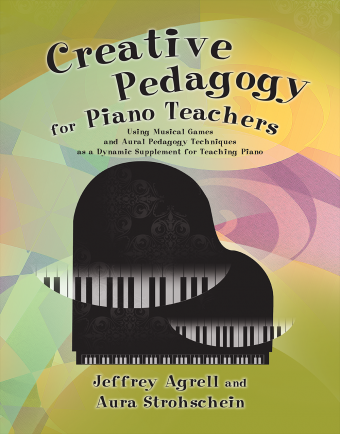
Creative Pedagogy for Piano Teachers
Using Musical Games and Aural Pedagogy Techniques as a Dynamic Supplement
by Jeffrey Agrell and Aura Strohschein
This book is EXCELLENT. If you are looking for a plethora of creative teaching games and ideas to teach from an aural perspective, then this is your book. Have a particular skill you’d like to work on with a student through a fun activity? Then just go to the contents page, find the skill and off you go. There are many improvisation exercises and prompts that are useful suggestions, and a variety of experience levels are catered for. The authors’ analysis of literate and aural traditions, and an assessment of what each brings to comprehensive musicianship skills are nice additions.
Publisher / stock code: GIA Publications / G8379
SNAPSHOT:
BEST FOR:
- Teachers with beginner to intermediate students.
- Any teacher wanting to add to their “fun and joy” toolkit.
HOW TO USE:
- Useful information at both ends of the book for the teacher. Pick out the activities you want to use for your students.
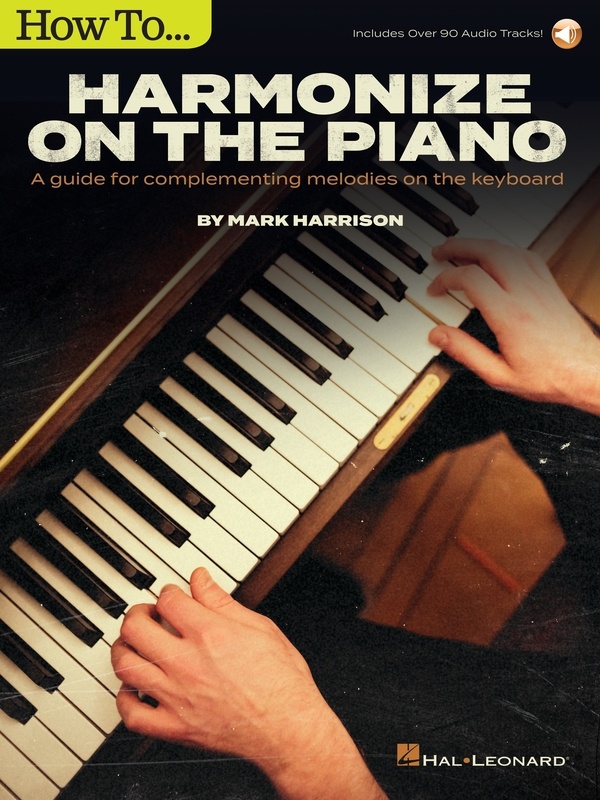
How to Harmonize on the Piano
A Guide for Complementing Melodies on the Keyboard
by Mark Harrison
This recent addition to the popular ‘How To…’ series from Hal Leonard offers a step-by-step approach on learning to complement melodies with chords on the piano. It is a very hands-on guide that would make a good workbook for an advancing student who wants to further explore lead charts. There are 90 accompanying audio tracks that are accessible online to use in the learning process, a nice addition! It explores rhythms, inversions and voicing, and chromatic and modal melodies.
Publisher / stock code: Hal Leonard / 292957
SNAPSHOT:
BEST FOR:
- Teachers who want to brush up on their own skills!
- Advancing students who could use this as a workbook for learning concepts and then applying these to songs in their lessons
HOW TO USE:
- This resource is written, and to be used, sequentially. Start with Chapter One and work your way through.
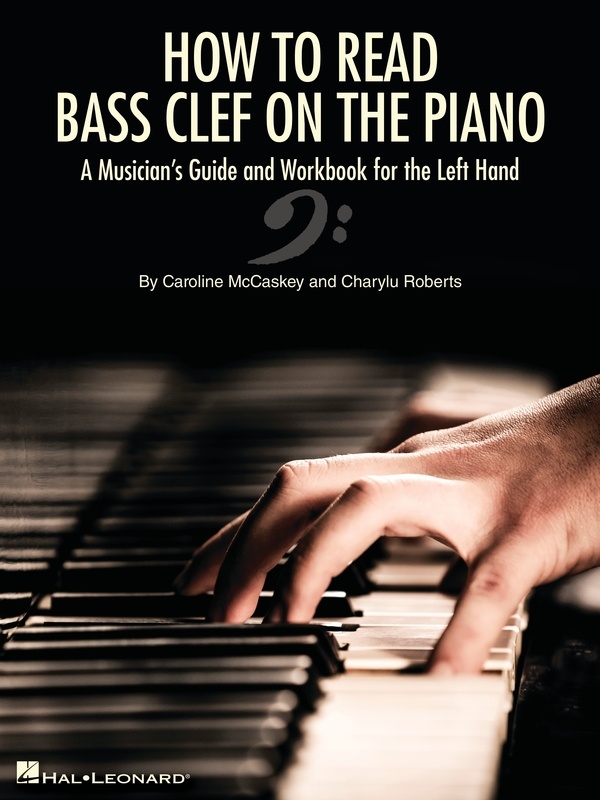
How to Read Bass Clef on the Piano
A Musician’s Guide and Workbook for the Left Hand
by Caroline McCaskey and Charylu Roberts
Have you ever had a student with a broken right arm? Or perhaps a student who needs some more fluency in reading the bass clef? This may well be the perfect resource for them! In this book, the bass clef is sequentially explored with a variety of explanations and exercises that in turn leads to small practical exercises in each chapter. Part theory book, part sight reading book, part repertoire book. There are other concepts covered including syncopated rhythms, intervals, chords, and accompaniment patterns. I will absolutely be utilizing this with my students… skateboards and netball season is no longer a hindrance!
Publisher / stock code: Hal Leonard / 344932
SNAPSHOT:
BEST FOR:
- Students needing more scaffolding around reading the bass clef.
- Those finding themselves with only a left hand to play with.
- Students who have previously learnt a treble clef instrument and need a crash course in bass clef for piano!
HOW TO USE:
- This resource is written, and to be used, sequentially. Start in Chapter One and work your way through. If you’ve got a student who is more advanced, jump into a chapter further on in the book that is suitable for them.
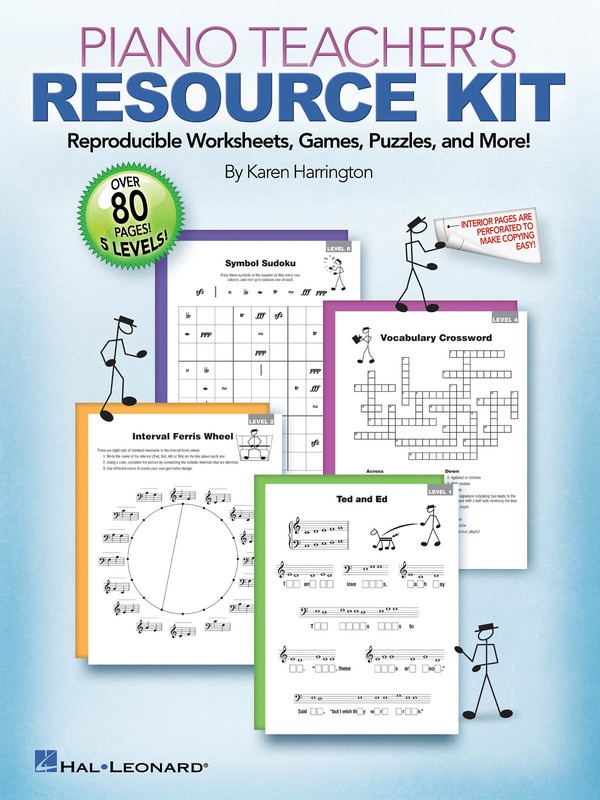
Piano Teacher’s Resource Kit
Reproducible Worksheets, Games, Puzzles, and More!
by Karen Harrington
For that student who just needs a bit more practice on a concept or a little more scaffolding to support the material they’re learning, this book is an ABSOLUTE GEM! It is a bit more expensive than other reference books, and rightly so as it is reproducible! You’re able to print off copies for your students to use over and over again. It is a book that has been in my collection for a long time, and it has been invaluable. I love that it has different activities (think Sudoku, note reading, crosswords, quizzes, and a variety of creative sorts) in progressive levels from 1-5. It suits a teacher who has a student base from beginner to grade five standard. It would be very useful for a teacher during online lessons for high quality off-the-piano activities.
Publisher / stock code: Hal Leonard / 296802
SNAPSHOT:
BEST FOR:
- Piano teachers with students from beginner to grade five.
HOW TO USE:
- Have a read through for yourself then pick out the suitable activities for each student.
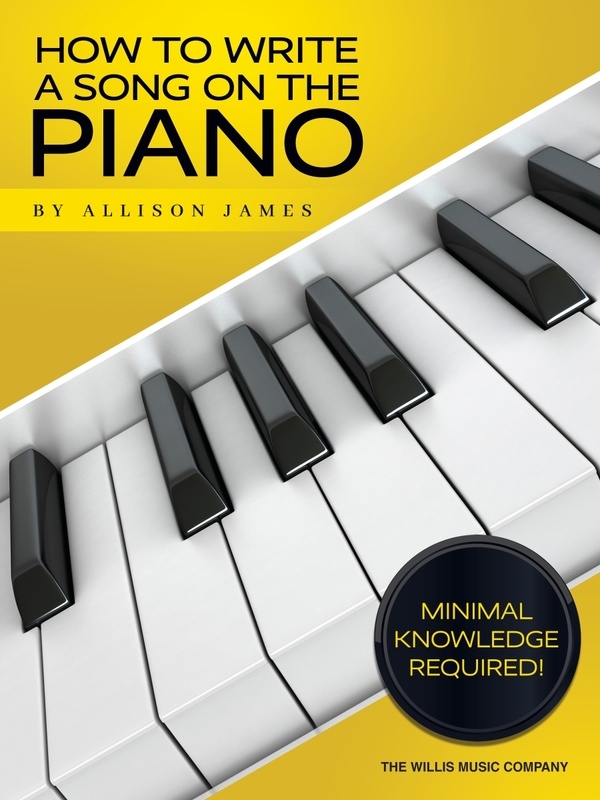
How to Write a Song on the Piano
by Allison James
Allison James has written this practical guide to song writing at the piano. It is a blueprint that takes the reader step-by-step through each element of song, first with demonstration examples, then with space to create your own. A basic knowledge of notation and theory is needed if a student were tackling this book on their own. But it could make for the start of a great studio challenge having all the components of song writing clearly outlined. It is presented in a clear, concise manner with ample illustration to help students along. I love that it encourages the student to write it down with notation prompts throughout the book.
Publisher / stock code: Willis Music Publishing / 293909
SNAPSHOT:
BEST FOR:
- Teachers to use as a resource to teach song writing with students.
- Self-directed students with a minimum grade one theory understanding.
- Could make a great basis for a whole studio challenge!
HOW TO USE:
- This resource is written, and to be used, sequentially.
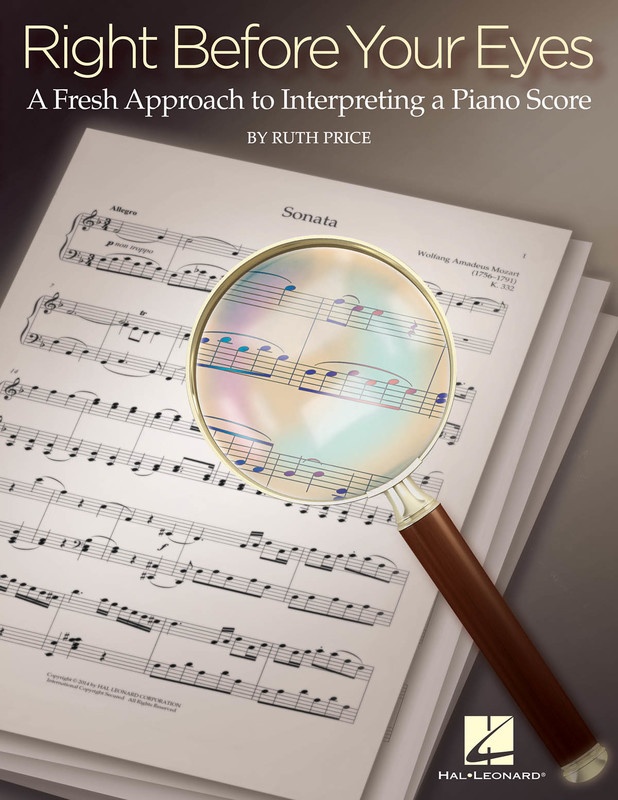
Right Before Your Eyes
A Fresh Approach to Interpreting a Piano Score
by Ruth Price
In this resource, Price states that “studying the score is a conscious decision,” a decision that pianists need to make to go beyond technical passages and musical instinct. In part one, Price outlines a three-step method for interpreting the score. Her explanations are clear, and you can almost hear her enthusiasm for discovering the magic within pieces. She further delves into how elements such as tempo, phrase length and surprises influence interpretation, and each concept is explored with well-known classical examples. In part two the reader is invited to explore these methods as applied to intermediate repertoire examples. This book was a happy little discovery, and one that has made it into my resource library.
Publisher / stock code: Hal Leonard / 123564
SNAPSHOT:
BEST FOR:
- The intermediate student learning to analyse and interpret the score beyond “what key is it in…”
- Teachers looking to expand their toolkit and skills in communicating score interpretation with intermediate to early advanced students.
HOW TO USE:
- Definitely a book to read cover to cover and then go back to the examples. Just pick the appropriate section for each student.
Resources for professionals
Just because we can play the piano, doesn’t mean we know how to teach, or indeed run a business.
The following resources look at the broader skills of being a piano teacher.
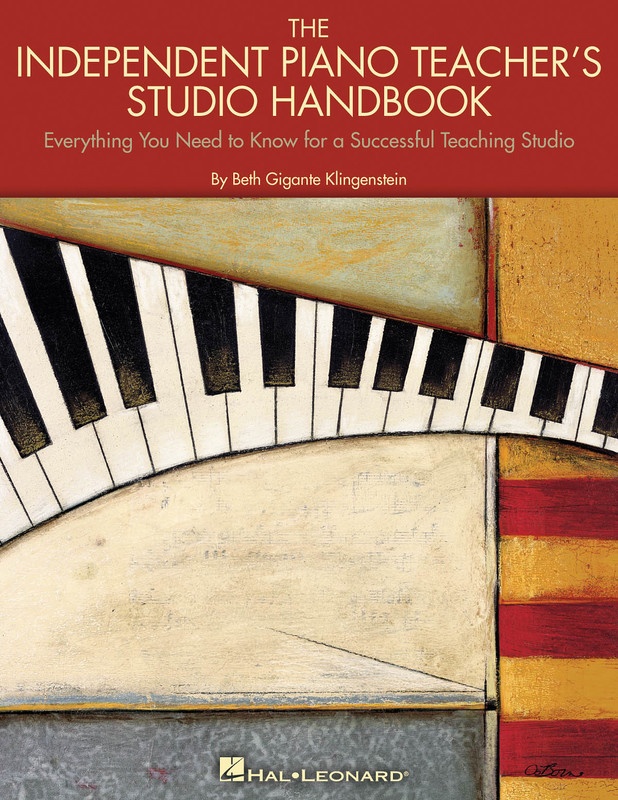
The Independent Piano Teacher’s Studio Handbook
Everything You Need to Know for a Successful Teaching Studio
by Beth Gigante Klingenstein
The subtitle for this book is “Everything You Need to Know for a Successful Teaching Studio” and it is indeed a comprehensive guide for piano teachers. It runs the entire gamut of professional practice, finances, communication, marketing, ethics, performance, pedagogy, curriculum and technology. It really is thorough and well researched. The additional reading and references are a helpful extension if you want more information on a particular topic. If you are looking for a one-stop reference for running a professional studio, then this would be the book for you. The writing is clear and has the benefit of the author’s considerable career in piano teaching. It is written with the American teacher in mind, so there are some areas (such as zoning) that would need regional consideration.
Publisher / stock code: Hal Leonard / 296515
SNAPSHOT:
BEST FOR:
- Any studio piano teacher; it has been on my shelf for years!
- The perfect gift for any new teacher.
HOW TO USE:
- Each chapter is its own topic, so you can go to whichever section you need at the time. Each chapter is valuable so a full read through is warranted.
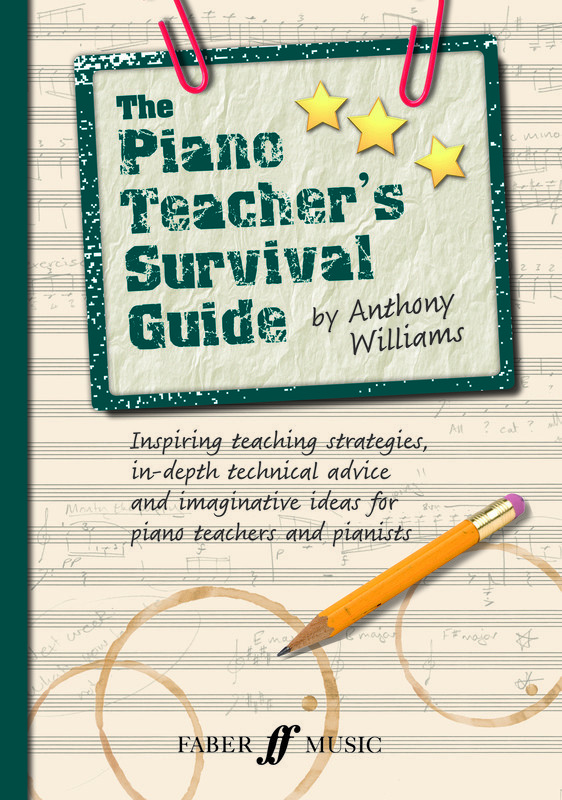
The Piano Teacher’s Survival Guide
Everything You Need to Know for a Successful Teaching Studio
by Anthony Williams
“Nurture the musician first, and the pianist second.”
In contrast to The Independent Piano Teacher’s Studio Handbook, this resource focuses solely on the teaching aspect of being a piano teacher. It tackles common frustrations encountered by pianists and the teaching skills needed for creating engaging, considered, technically sound and successful lessons. I particularly enjoyed the chapters on developing curriculum and performance interpretation across eras. For a book that is only 168 pages, it is very comprehensive and insightful.
Publisher / stock code: Faber Music / F0571539645
SNAPSHOT:
BEST FOR:
- Early career teachers.
- Piano teachers completing instrumental teaching diplomas.
HOW TO USE:
- Each chapter is its own topic, so you can go to whichever section you need at the time. Each chapter is valuable so a full read through is warranted.
Resources to inspire educators
Filling up your tank is an important element to stop yourself from burning out as an educator.
The following resources explore our profession more philosophically.
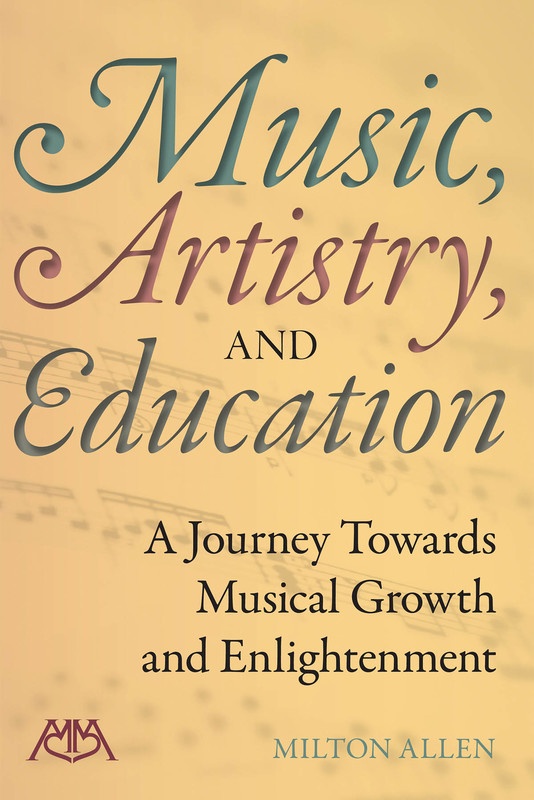
Music, Artistry, and Education
A Journey Towards Musical Growth and Enlightenment
by Dr Milton Allen
This book has been reviewed consistently with words like inspiring, sincere, and profound. Through a series of stories about his life’s work in music education, Dr Allen draws on philosophies around music education and how to approach it with artistry. It is from the author’s perspective as both an educator and conductor, and offers signposts at the end of each chapter as a chance to reflect on our growth and enrichment as educators.
Publisher / stock code: Meredith Music / 317226
SNAPSHOT:
BEST FOR:
- Experienced teachers looking for an uplifting connection and maybe a bit of a re-connection to your own philosophy.
- Beginner teachers ready to dive in and develop their own philosophy around music education.
HOW TO USE:
- This is a cover-to-cover book. You could dip in and out, but it will make more sense read sequentially.
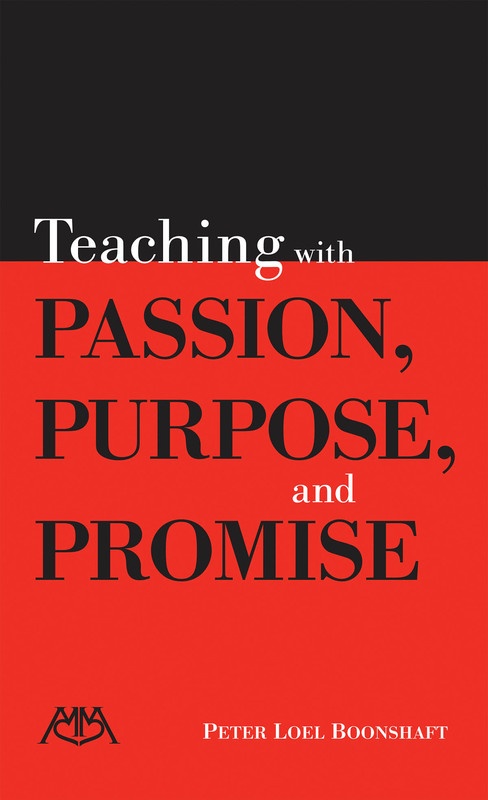
Teaching with Passion, Purpose and Promise
by Peter Loel Boonshaft
This book is a collection of delightful stories, solutions, and ideas for teachers. It isn’t piano, or even music specific, and yet it is full of reflections (and inspirations) that are relevant for piano teachers. Each chapter is short, between 3-6 pages, making it easy to pick up briefly. It isn’t sequential, so I dip in and out of the book to the chapter that inspires me on the day. It challenges and inspires me and has earned a permanent place on my shelf.
Publisher / stock code: Meredith Music / 317198
SNAPSHOT:
BEST FOR:
- A teacher at any stage of their career.
HOW TO USE:
- I read this cover to cover and have bookmarked my favourite spots to return to later.
Resources to help you (and your students) practise!
Developing great practice strategies and routines are pivotal in musical progress.
These resources seek to illuminate what makes effective and useful practice.
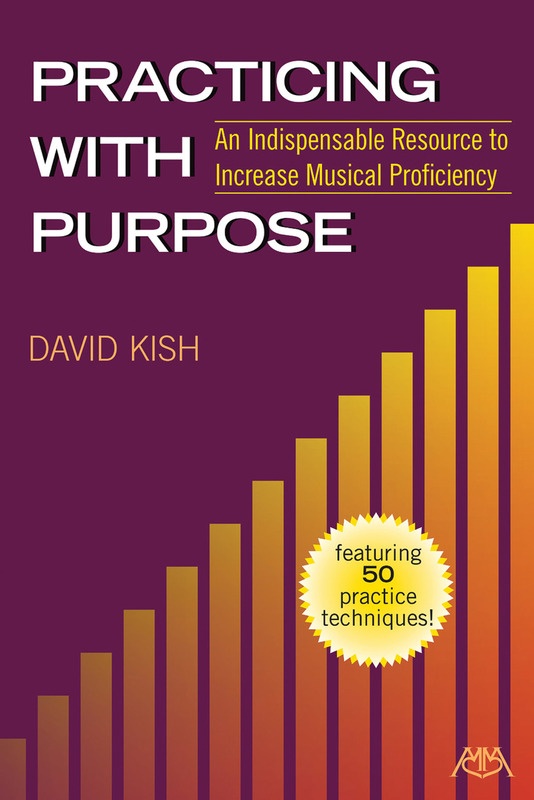
Practicing With Purpose
An Indispensable Resource to Increase Musical Proficiency
by David Kish
“Experience is simply the name we give our mistakes.” – Oscar Wilde.
In this well-researched book, Kish delves into ten ideals of effective practice, the science behind them and how they are useful for musicians. He also outlines 30 suggestions for practice strategies. Individually the strategies are helpful, but together they make for an excellent reference collection for teachers and students looking to be proactive about their practice time. The book also includes ten implementation and reflection tools, useful to the long-term improvement and analysis of practice effectiveness. As a bonus there are also suggested practice plans, for different levels of experience, to demonstrate what a well-structured practice session may look like.
Publisher / stock code: Meredith Music / 256158
SNAPSHOT:
BEST FOR:
- Teachers studying pedagogy and wanting to learn the ins and outs of great practice.
- Teachers looking for solutions to teaching students about effective practice.
- Recommended for advancing musicians/adult students wanting to dive into strategies to support their practice.
HOW TO USE:
- This is a quick read, best read cover to cover.
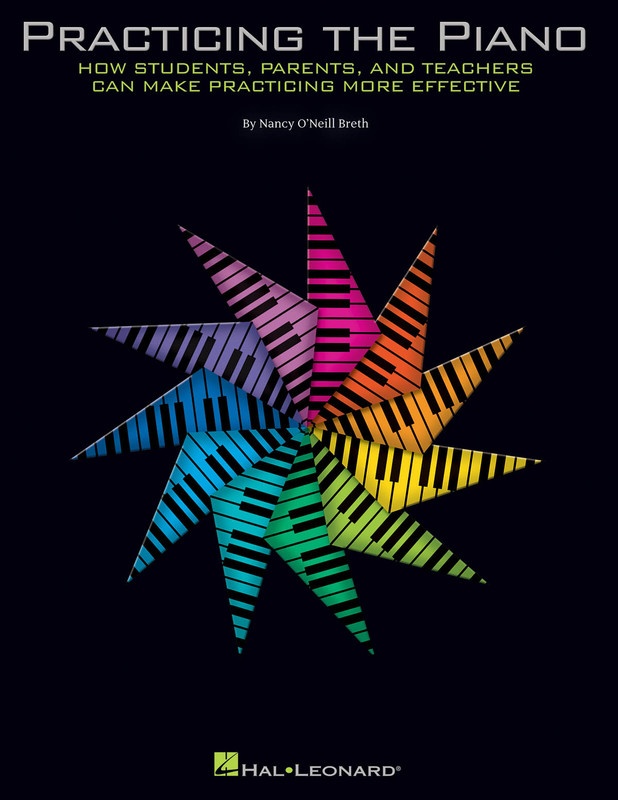
Practicing the Piano
How Students, Parents, and Teachers Can Make Practicing More Effective
by Nancy O’Neill Breth
What The Independent Piano Teacher’s Studio Handbook is to professional studio operations, this book is to practice! It is an exceptional handbook for teachers delving into practice tips and solutions to pianistic challenges. It is a resource best for teachers, and it offers companion material for students and parents that can be purchased separately. The companion material is considered and includes prompts for students to use in practice time. In Practicing the Piano, O’Neill Breth uses excerpts from popular classical pieces to demonstrate specific practice techniques to overcome common challenges. It is very well designed and a must-have reference book for teachers!
Publisher / stock code: Hal Leonard / 296801
SNAPSHOT:
BEST FOR:
- Teachers studying pedagogy.
- Advanced students looking to improve the effectiveness of their practice.
- Using in conjunction with the companion resources specifically for parents/students.
HOW TO USE:
- Best read cover to cover to have the full context before using it with students.